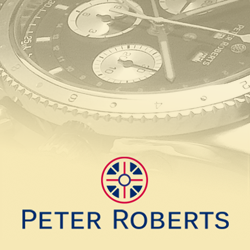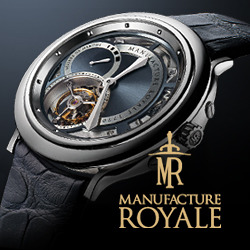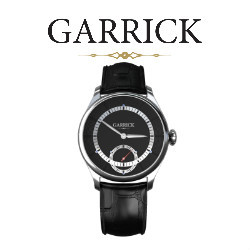Default watch purchases used to fall into categories: “dress watch”, “sport watch” and “work watch” were the main headings. There were numerous choices within those groupings, but few mattered. If you were looking at the quality sector, as opposed to considering one of the many thousands of cheap watches that flood the market, only three or four brands counted. What the had in common were quality, reputation and – important for some – exclusivity.
All that changed with the “watch revolution”, the late-1980s backlash against quartz watches that, seemingly overnight, made mechanical watches desirable again. Established brands that survived the culling of quartz were suddenly hot again, and every thrusting overachiever wanted a Rolex, a Patek Philippe, an Audemars Piguet, a Cartier or – if they came from old money and were the sort who eschewed clothing with visible labels – a Vacheron Constantin. Everything else, however good, was an also-ran in terms of prestige.
What the watch revolution did, however, for the all-but-forgotten brands was to inspire them. Girard-Perregaux, Blancpain, Breguet, Ulysse Nardin and a few hundred others awoke from their slumbers, while new “auteur” brands founded by hot, young watchmakers vied for the same audience: Franck Muller, Daniel Roth, Chronoswiss, FP Journe and too many more newcomers to list.
Something that all of them learned was how the new breed of watch connoisseur wanted big and bold, if not necessarily bling. Such virtues were previously the sole province of sporting watches, but sizes had increased from the median 34mm for a normal man’s watch, to 38mm-40mm or more. And the poster child for this was Panerai, followed closely by specific models including the Audemars Piguet Royal Oak, Patek Philippe’s Nautilus and, of course, the more butch Rolexes.
Panerai had expanded the watch language in the mid-1990s by being everything contrary to tradition, despite its birth taking place in 1936; the 1990s watches were reissues of old designs. They were created for the Italian Navy’s saboteurs, but – by necessity – were among the earliest of the truly rugged, genuinely water-resistant time pieces.
Panerais, military origins or not, were the essence of sport watches, in the way that the Jeep, also designed wholly for the military, became the template for all SUVs that followed, most notably its most blatant copycat, the Land Rover. (How Jeep presaged the luxury SUV concept co-opted by the Range Rover, and by over two decades, will have to wait for another time and place, oh, ye fuming xenophobes.)
While one could also posit that Jaeger-LeCoultre’s Reverso was designed purely for sport, to protect a watch’s crystal while its wearer played polo, most shock-resistant watches could arguably survive the rigours of sport. The true arbiter, given that shock resistance was becoming the norm after World War II, was immunity to the ingress of moisture, an essential in any a diving watch.
As much as diving, sailing, swimming, fishing, yachting and other water-based activities are not the only sports in which man indulges, and are no more in need of accurate timing than “dry” sports including track events, football matches, motor racing and the rest, they do represent a worst-case scenario. A diving watch failing while the tanks slowly run out of oxygen can lead to a fatality. Reading the time under water requires superior legibility. Greater depths require stronger cases. None of these apply to land or air sports, so diving watches (civilian or military) make the best sport watches.
Prior to the 1940s, few watches, including the robust Panerais, could boast near-total shock resistance, and the materials and lubricants we now take for granted did not even exist 70 years ago. The watershed year, if you’ll forgive the pun, was 1953, when both Rolex and Blancpain simultaneously created what would be the definitive layout for diving, and therefore sport watches.
Rolex’s Submariner and Blancpain’s Fifty Fathoms both highlighted water resistance, superlative legibility and rotating bezels for indicating the time remaining in a dive. Both would serve military purposes. Both are still in production today, nearly 60 years after their debuts. And both have inspired the majority of watches able to withstand submersion.
Two decades after the Submariner and the Fifty Fathoms appeared, Audemars Piguet, followed by Patek Philippe, changed the rules for sport watches. AP’s Royal Oak and PP’s Nautilus, both designed by Gerald Genta, abandoned the pure functionality of watches like the Submariner and the Fifty Fathoms, where suitability for purpose defined every detail, in favour of watches that would survive a round of golf or a chukka while looking good with a dinner jacket.
True, the Nautilus and the Royal Oak may seem like Wayne Rooney in a suit, but that’s OK: underneath, they do all that a sports watch should. Today, the market bristles with the benefactors of their adding of gloss to functionality.
Hublot’s Big Bang, most Richard Mille models, Breitling Bentleys, various Corums and other slick “sport/dress” watches vie for your attention with the unabashedly sporting IWC Aquatimer, Omega Seamaster, the orange-dialled Doxa, various TAG-Heuers, diving models from Longines and Hamilton, JeanRichard’s Highlands, Nautische Muhle’s Marinus, the Victorinox Divemaster 500, Bremont’s Supermarine, a host of Jaeger-LeCoultre sport models, the revived Alpina line and so many others that you’re spoiled for choice. But it’s always worth remembering, if the choice is all-too-overwhelming: when the going gets tough, the tough don Rolexes.
(City A.M., 2012)










